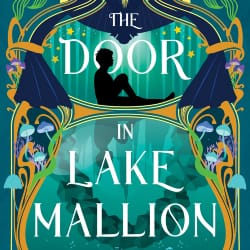Having an Off Week - The Lagrange Point Vol. I, Iss. 15
What happens when your political identity becomes more about beating your enemies than helping your friends?

Welcome to issue #15 of The Lagrange Point! Big welcome to the latest subscribers. Thank you for signing on, and please, continue to spread the word to others!
I'm back from my vacation in Morocco, which turned out to be a bit less-restful than I had hoped, with a mugging and an e. coli infection messing me up quite a bit. As such, this edition is...a bit scanty. I'm trying to shake off the sickness and fatigue, but please bear with some re-cycled content as I get back up to speed.
Thank you guys and I promise it'll be a proper issue on October 28!
In This Issue
Distant Early Warnings
- Belated releases!
Crafter's Corner
- On momentary hiatus! Don't worry, it'll be back next week.
Rantables
- A few rotten police transparency apples spoils a barrelful of conspiracy theories
Distant Early Warnings
Upcoming releases and events of Canadian geek things
I'm a bit behind on releases right now, soooo all of these have already launched. Let's get caught up, shall we?

Cole Pauls, a Champagne and Aishihik Citizen and Tahltan comic artist, illustrator & printmaker, has a new pocket-sized book out from Conundrum Press. We See Stars Only at Night is an art book of surrealistic Tahltan shapes, landscapes and motifs that form a narrative. This started as a special feature presented at a gallery show, and expanded into an 80-page book.

For younger audiences, Toronto-based cartoonist Paul Gilligan, creator of Pooch Cafe, has a new hilarious graphic memoir on shelves. Boy vs Shark is a look at a young Gilligan's encounter with the hit movie Jaws, which left a deep impression on his young psyche in 1975. From what I understand, the titular shark functions like an imaginary devil on the Boy's shoulder, guiding him to "how to be a man." It's a touching, and important, look at toxic masculinity and growing up, aimed at audiences in and around middle school.
Over at ECW Press, the second book of Winnipeg author S.M. Beiko's Brindlewatch Quartet, The Door in Lake Mallion, is out. The series' books are individual tales but feature overlapping characters and a common setting, the titular world of Brindlewatch, "a world like ours from days gone by" with "fast shiny cars, growing metropolises, and a war on the other side of the ocean with an enemy no one can see." The second entry in the YA fantasy quintet focuses on Dunstan, who is forced into the bottom of Lake Mallion and finds a magical door to another world. I've never read or even heard of Edward Steed, but his collection of single-panel comics, Forces of Nature, definitely looks like my sense of humour. Although Steed isn't Canadian, I'm sneaking this one into my list of releases on account of it coming from Drawn and Quarterly in Montreal. And listen, I had to include this, on the basis that anyone who draws a comic involving surgery via swinging door deserves a look.

Crafter's Corner
THIS SPACE TO BE FILLED AGAIN SOON
As I'm coming off an e.coli infection and my vacation (yes, one followed the other), I'm afraid I'm behind on painting and such. So for this week, please accept my sincere apologies for the lack of content.
But next week I'll be nerding it up in earnest...
Rantables
A few rotten police transparency apples spoils a barrelful of conspiracy theories
What follows is a column I pitched a while back about the need for police transparency after an alleged "attack" at Coastal Gaslink. This was written in February 2022. Per The Tyee, it took the police over a year to release any details. And they never "solved" the case. Sus? Just a bit. Read on...

You could be forgiven for missing out on what would ordinarily be a pretty large story out of B.C. this week. According to the RCMP and Coastal Gaslink, a group of axe-wielding people assaulted a facility some distance southeast of Smithers, B.C., on Wet'su'weten territory, causing what CGL is saying is millions in damage.
Wow. Huge, right?
Yet almost immediately after thinking through that initial reaction, another narrative quickly emerged online, appropriately using internet vernacular: huge...if true.
There were several threads quickly tugged at from the initial release from the RCMP. How did they fail to make any arrests in such a remote area, with only one access road? How have no suspects been identified? How did the alleged attackers make there way to this remote area, and out again, free of harassment?
Journalists like Brandi Morin also said they had reached out to hereditary chiefs and Gidimt'en leadership, who said that they had no knowledge of these attacks. It's also fair to say that objectively, such an attack would represent a major departure in tactics and behaviour from the vast majority of the Wet'su'weten protests to date.
But pointing all of this out is dancing around the main issue, which is that the RCMP's word is now of dubious merit.
The questions above, and others besides, are not unreasonable questions to ask. In other policing situations too numerous to count, media and the public have not been informed. This doesn't just include improper response to protest, it includes national tragedies like the mass shooting in Nova Scotia, when RCMP response utterly failed to protect people and subsequent questioning was met with stonewalling. In short, the problem is not that the questions are being asked. It is that our police have not been giving us answers.
It's not merely that the full, naked truth of how police handle protesters of different racial backgrounds has been on display for weeks during the Ottawa and associated "Freedom Convoy" demonstrations. It's not even really that multiple, precedent-setting issues of distrust, such as an actual plot by the RCMP to frame environmentalists for a terrorist attack, or another RCMP plot that involved a ludicrous amount of entrapment and outright fostering of extremism, have largely gone unpunished and unexamined.
It's that transparency and accountability are topics which are greeted with uproarious laughter in Canada, as FOIP and ATIP requests are delayed on the order of years, and in most cases lead to such heavily redacted information as to be utterly worthless. It's that the RCMP and other policing bodies, rather than engaging in introspection and reform at a time when it is increasingly demanded, have doubled-down on the use of symbols like the "thin blue line" to denote how they are a class separate, and in most cases, above the law.
These are the twists and turns by which we find ourselves in a situation where a conspiracy theory that posits that CGL and the RCMP have somehow colluded to stage an attack on a pipeline facility can credibly be greeted with shrugs and uncertainty. And rather than address these concerns meaningfully, policing bodies and, indeed, most other government authorities continue to make it harder, not easier, for the public to understand their institutions and be informed about what they're doing.
Only a truly misguided mentality would believe that the best method for combating misinformation is to increasingly lock down the availability of facts, and yet that is undeniably where we are. The media plays its part in this process as well, disseminating police press releases with aplomb and only eventually circling back — sometimes — to re-examine their earlier, single-sourced, uncritical coverage. Communications officers are now common across the police landscape, but the voluminous content they churn out is heavily in the "spin" style of information.
And of course — of course — there are exceptions, in both media and police. Some reporters seek to question police and other authorities, and some police do provide answers and information. The problem, which we must routinely remind those already charging to the comment section to proclaim "not all cops" or whatever canned nonsense, is that these problems are long-standing and institutional.
Currently, we're at (hopefully) the nadir of a long, slow decline in trust in the authorities. People no longer feel confident in calling 911. We have open and naked defiance on the part of multiple policing figures to actually enforce the law without bias. Now, we're ready to embrace conspiratorial gossip because honestly, it's not outside the realm of possibility.
Huge, if true.
That wraps up issue #14 of The Lagrange Point! If you enjoyed this little e-newsletter, please consider subscribing, or, if you're already subscribed, sharing it with a friend or family member!
I can't grow this e-newsletter alone. I need lots of mouths spreading lots of words about why people should read The Lagrange Point.
Until next Monday, thank you for reading!
-Tim



